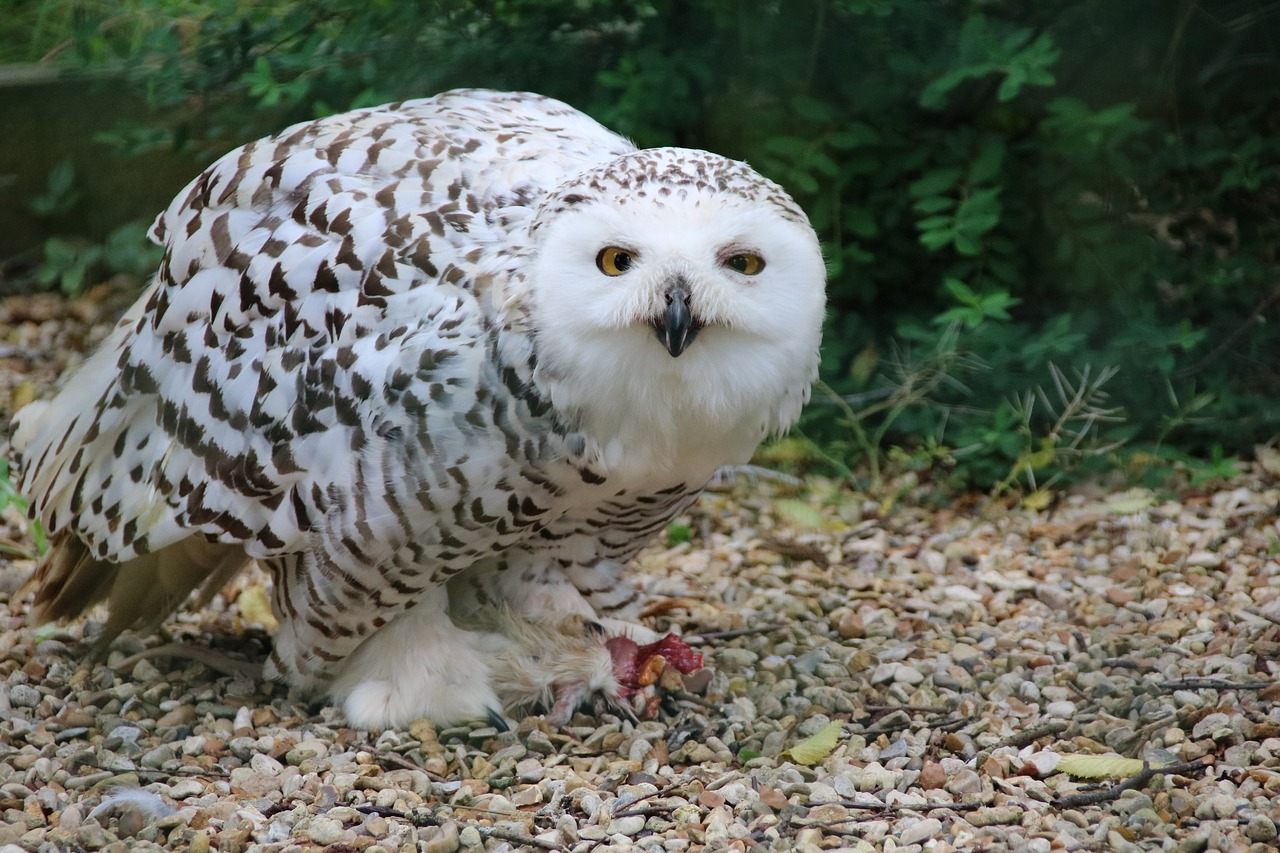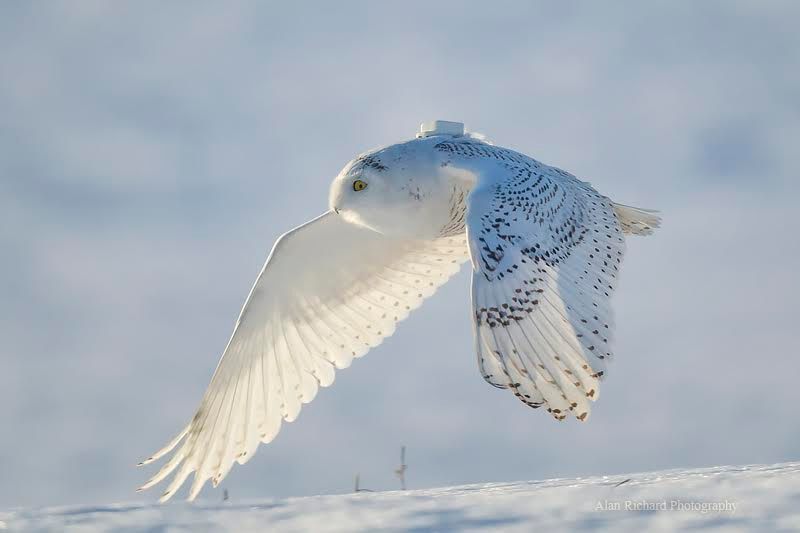The Snowy Owls Are Back in Town
Them wild-eyed birds that had been away.

They’re perching atop the light poles of Cleveland, the Wal-Marts of Indiana, and the fences of upstate New York. They’re strutting across the beaches of New Jersey, the parking lots of Milwaukee, and the sidewalks of Detroit.
They’re posing for fans in Rochester. They’re getting stuck in the coffee shop heating vents of Duluth. That’s right. After a few years of relatively scant sightings, snowy owls are back in droves, drawing appreciative crowds across a wide swath of Canada and the United States.
It’s a snowy owl invasion in Michigan, even in downtown Detroit… pic.twitter.com/KEVKrI3Gym
— Susan Whitall (@swhitall) December 7, 2017
Snowy owls are essentially bird rock stars, two feet tall with great plumage and a powerful hoot. “They’re really amazing,” says Scott Weidensaul, one of the founders of Project SNOWstorm, a conservation organization that tracks the birds each year. “They’re big, beautiful, charismatic, sexy.”
They enjoy a commensurate lifestyle. In the summer, snowy owls live way up north, in the Arctic and subarctic. There, they feed on lemmings, which, every four years or so, go through a baby boom. The owls hustle over—“we don’t know how snowy owls know where the lemming peak is happening,” says Weidensaul, “but somehow they do”—congregate, and feast. (In particularly good years, they may even build their nests out of dead lemmings.)
Then they have, essentially, bird orgies. “They lay a lot of eggs,” Weidensaul says, “and have lots and lots of babies.”

Those babies grow up, pick up, and head south for the winter. And so, roughly every four years, snowy owls rush down from the Arctic, much to the delight of birders. “It’s known as an irruption,” says Weidensaul. (This is not the same as an eruption, he clarifies: “It means a rushing-in, rather than an exploding out.”)
Some tours are bigger than others. “We had a massive irruption in the East and the Great Lakes about four years ago—the biggest since at least the 1920s,” says Weidensaul. The more owls there are, the farther down some of them end up. “There was one in Jacksonville, Florida, and another in Bermuda,” he adds.

That particular super-irruption started at a breeding ground on the Ungava Peninsula in Northern Quebec. Thanks to reports from Canadian scientists and miners, experts think much of this year’s group was probably born there, too. “We don’t know if it’s going to be as historically large as it was in 2013 and 2014,” says Weidensaul.
But things are certainly off to a fine start. “The state bird lists and rare bird reports are buzzing with snowy owl reports,” as are citizen science platforms like eBird, he says. “I can tell it’s been a good year just by how many media requests I’m getting.”
While the Great Lakes and the Upper Midwest are seeing most of the action, there have also been plenty of owls in New England, the Mid-Atlantic, and southeastern Canada. Some have even made it to the Dakotas, Oklahoma, Wyoming, and Colorado.
This year’s Snowy Owl invasion in North America: only moderate along east coast, but may be developing into one of the biggest on record around the Great Lakes. Remarkable numbers already by Dec. 2nd. #birding #owls pic.twitter.com/tkPxUHB0aP
— Kenn Kaufman (@KennKaufman) December 2, 2017
So what should you do if you want to see one? Weidensaul suggests hanging around wide-open spaces: coastlines, farmland, fields.”They tend to be attracted to places that remind them a little bit of the Arctic,” he says.
If you do find one, don’t feed the bird. “There’s a persistent belief that these birds are coming south because they’re hungry, but it’s not true,” he says. “Most of them are fat and really healthy.” And don’t be surprised if the bird’s out in the sunshine; after all, in the Arctic summer, it’s light all day. “They’re kind of sitting out there in the open in the daytime,” he says. “But they do most of their hunting after dark.”
Snowy Owl sighting at abandoned Lot at Laramie and 16th in Chicago. Magnificent raptor, she is! Full video pic.twitter.com/9WTvnsVz18
— Deb’s Big Backyard (@debqm) December 1, 2017
And needless to say, don’t bug them. “Respect the owl,” Weidensaul says. Don’t try to scare it or flush it out of a tree. If it flies off on its own, and you happen to get a good photo, you can send it to Project SNOWstorm, and if the tail and wings are visible, they can tell you your new friend’s age and sex.
Above all, though, enjoy it. “They’re amazing birds,” Weidensaul enthuses. “People get excited when snowy owls show up, and they should.”
















Follow us on Twitter to get the latest on the world's hidden wonders.
Like us on Facebook to get the latest on the world's hidden wonders.
Follow us on Twitter Like us on Facebook